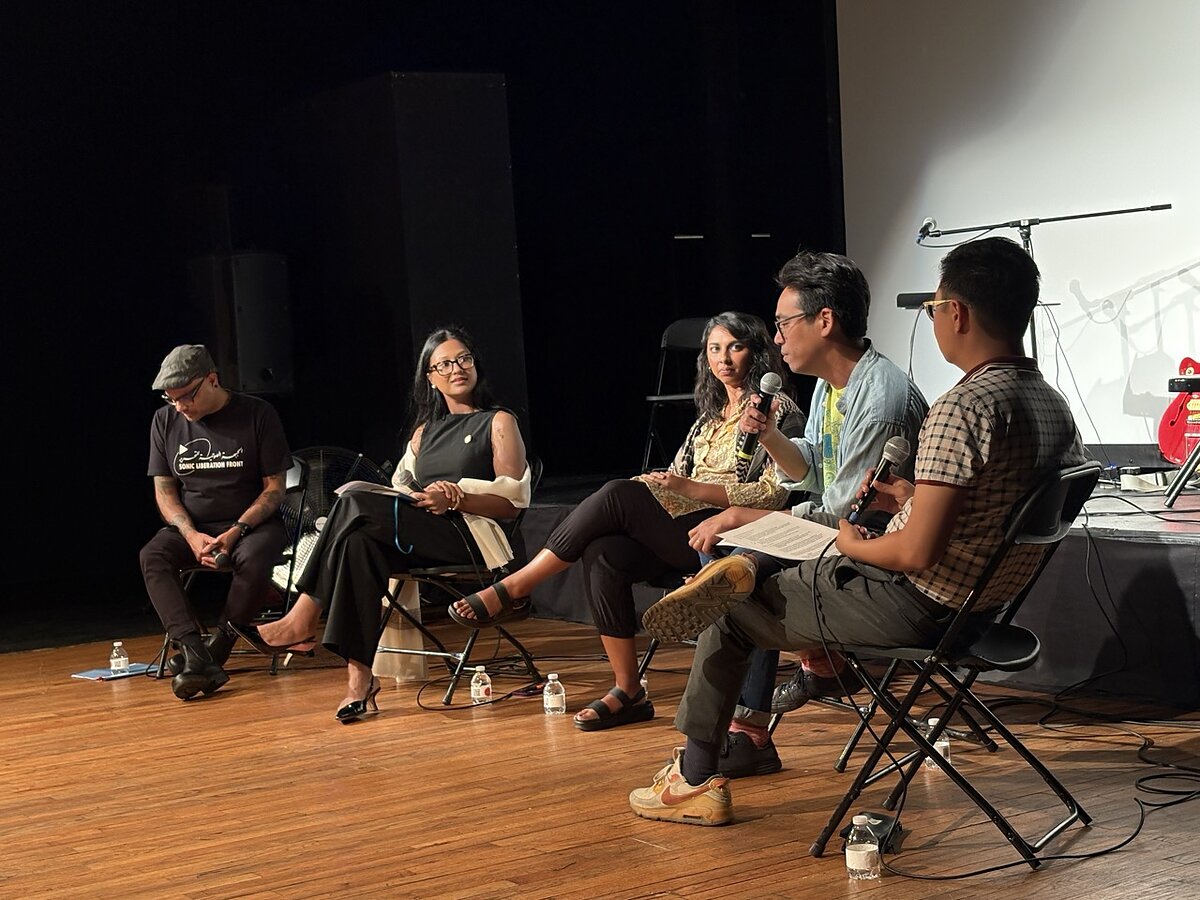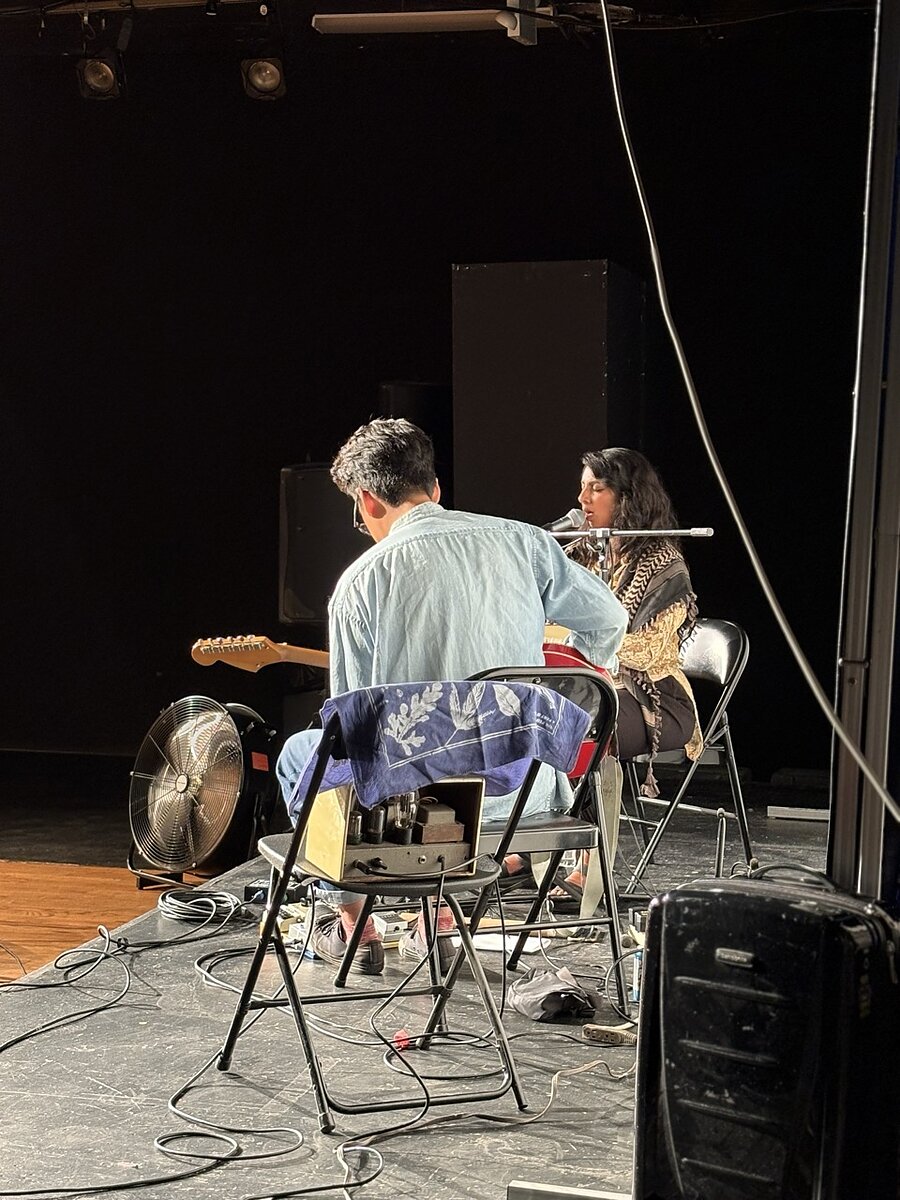Who is This Music For?: Access in Counterculture
On September 3, 2025, Asian American Arts Alliance hosted a panel discussion at The Clemente on the lack of access Asian diasporic communities have to countercultural arts. Co-moderated by Ravish Momin, drummer, producer, and educator; and Leo Chang, musician, scholar of experimental arts, and operations associate at A4, the panel included Che Chen, composer, multi-instrumentalist, and curator for Four One One; Amirtha Kidambi, musician, bandleader of Elder Ones, educator, and activist; and Shahana Hanif, City Council Member for New York City’s 39th District.
Together, they offered a critical examination of who gets to be an artist within countercultures, particularly at a time when such modes of cultural existence are being made impossible. They ask: Who is countercultural music for? Who should countercultural music be for? And how can we organize in a way that changes who this music scene is being developed by and for?
The following is Chang’s introduction to the discussion, edited for publication in The Amp.
In considering access within countercultural music, a good place to begin would be to clarify what we mean by countercultural music. Historically speaking, we often look to the 1970s and 80s as a time when many countercultural music scenes took off simultaneously. There was techno in Detroit, a multitude of punk scenes, and in NYC, there was hip hop in the Bronx, along with free jazz, no wave, new wave, noise, minimalism, Fluxus, etc. where musicians like Che Chen, Amirtha Kidambi, Ravish Momin, and I draw significant parts of our artistic influences from.
So when we reference countercultural music, we are talking about these types of artistic movements and scenes. Across the board, these scenes came about from an artistic community that shared proximity, space, knowledge, skills, often sociopolitical aspirations, as well as the desire to try out new things, idiosyncratic ideas, experiment, embrace the weird or unfamiliar, and so on.
In discussing the topic of access to counterculture today, and in inviting not just artists who have been organizing in NYC for many years but also a city councilmember to bridge that gap of understanding between artistic organizing and political organizing, we are compelled to consider the social conditions that allow for countercultures to flourish.
For example, the cost of space and housing: I was listening to a 2014 lecture by late cultural critic Mark Fisher, when in the process of making a larger argument, he points out how social conditions such as the tolerance to squatting in London in the ‘70s were key to the rise of a working-class driven punk movement of the time. We can easily draw parallels to NYC in the ‘70s and ‘80s as we know squatting was integral to various countercultural arts scenes, as were block parties in the Bronx.
For the Asian American art community, we can look to the Basement Workshop as a movement that organized in Chinatown (originally in a literal basement) to cultivate a politically and class conscious countercultural arts community. Asian American Arts Alliance formed out of those same efforts in the mid ‘80s. These examples illuminate how countercultures can thrive when artists assert agency and gain access within spaces where their communities live.
Today, the conditions that allowed for the type of countercultural arts movements in the ‘70s and ‘80s are decimated: squatting is not an option, and housing costs have risen astronomically, with the private real estate sector holding immense power in city politics and police enforcement rendering most covert dwelling impossible. An arts education, along with university education in general, has become incredibly expensive, contributing to elitism in academia, along with the art schools that are housed within it, significantly limiting who gets to even think about being an artist, never mind an experimental one.
As for the racialization and exploitation of counterculture, we can talk about a number of failures. How the globalization of hip hop and techno has not funneled actual capital to the neighborhoods and communities where they originated. Or the overwhelming whiteness of the experimental music scene. Fred Ho articulated the latter point back in 1991 in A4’s magazine: “A casual survey of the ‘experiential’ or ‘new wave’ performance scene in the US confirms that what has come to be called New American Art is neither really new nor that American, but a continuation of Eurocentrism and white chauvinism.”
In this way counterculture has been systemically distanced from the very communities they have sought to be for, even if the communities would welcome adventurous arts. “I have found, in doing benefits with my jazz ensembles for a Chinese immigrant audience, an enthusiastic response to innovative, experimental, and radical artistic forms,” continued Fred Ho in the same 1991 essay. “When we combined indigenous kulintang music with avant-garde jazz—traditional Filipino community audiences were ecstatic.”
Countercultural music scenes teach us that artistic identity can arise out of a community of artists passing around ideas that catch on among each other, becoming a feedback loop that eventually takes on cultural importance and breathes life into the larger cultural ecosystem. Countercultures signal the health of the arts in general, because they are led by artists and their communities. We are holding this panel today because we want countercultural movements to be self critical but also be in dialogue with leaders like Councilmember Hanif so that we the artists might better understand how to serve community in this day and age—and that our leaders might understand the importance of artistic work at the ground level.

